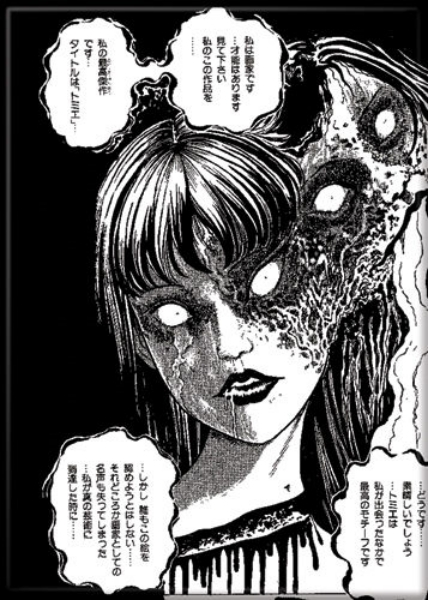
Like here, for instanceĪgain, take a minute to really look at every feature of this face. There’s often at least a hint of it in his eyes, and sometimes more than a hint. Making certain parts of the image too bright is a favored technique of Ito’s. That would be like looking at the Mantegna and thinking “Gee, Christ had acromegaly.” Nevertheless, we recognize the distortion. (Of course, we don’t typically look at a drawing and then try to reverse-engineer the lighting setup. So the composition of the face is essentially unrealistic.

LAYERS OF FEAR 2 JUNJI ITO FULL
What lighting conditions that would have to exist, to make someone’s face actually look like this? That washed-out hint of a nose implies that she’s standing in front of a full bank of klieg lights… but if the lighting were that intense, you’d never see that much detail on the eyes, nor would she be able to keep them so wide open. How much work went into each of them? The nose, in particular, is just barely there, right? Whereas the eyes are rich and detailed, with more than a dozen individually delineated eyelashes. Try to think of them as lines, traces left by a pen sliding across paper. Take a minute to really look closely at this face in the image above, lingering over each of her features… and then look at it again, and try to stop seeing the features as features. When we look at Junji Ito’s eyes, we’re dealing with more or less the same phenomenon - it’s just a subtler and more unusual case. My father (who used to teach drawing and color) would illustrate the technique by showing Mantegna’s “Lamentation Over the Dead Christ.” (If you clicked through to the shock images, you know that Junji Ito is a dude who is not on speaking terms with realism of any kind.) The offness of the eyes is, rather, a matter of expressive distortion: a selective betrayal of realism.Įxpressive distortion is a pretty standard aspect of all sorts of visual art. That said, it strikes me as unlikely that Ito’s art is scary just because he’s good at realistic drawings of frightened people. (There’s even research that suggests that we’re sensitive to the whites of people’s eyes in particular.) Cartoon eyes in general tend to show huge amounts of white, but when we see more white than USUAL, whatever usual might be, we’re going to interpret that as fear, and we may end up mirroring the emotion. People widen their eyes when they’re scared, and we tend to start feeling scared ourselves when we see someone else’s frightened face. In some cases, like the last image above, the effect might be biologically determined. I want to talk about how Junji Ito draws eyes.


When is it going to get crazy? When is it going to get gross? And I’m sure that Ito owes his fame and success to his ability to come up with (and execute), these nightmare visions.īut this post is about a quieter aspect of his technique, and one which - unlike the horror-images linked above - appears not just in one of his comics, but pretty much systematically throughout his work.

The revelation of the horror-image, in fact, becomes a meta-narrative tension that runs throughout the story. When you open up a Junji Ito book, you do so knowing that you’re going to be confronted with an image like this eventually. Jesus, there’s just no warning some people.) Even though this post is about horror, everything else on this page is pretty PG - but if you want an unfiltered taste of Junji Ito’s horrific imagination, click here. Just coming up with this many appalling ideas, and then finding novel and visually arresting ways for each of them to look horrific, is an astonishing achievement (and/or a sign that Ito needs to go have a glass of warm milk and a lie-down). Spiral in particular is usually seen as his masterwork, but to my mind his vast output of short stories is even more remarkable. Junji Ito is a Japanese comics artist who specializes in horror, most famous for his large-scale works, Spiral, Gyo, and Tomie.


 0 kommentar(er)
0 kommentar(er)
